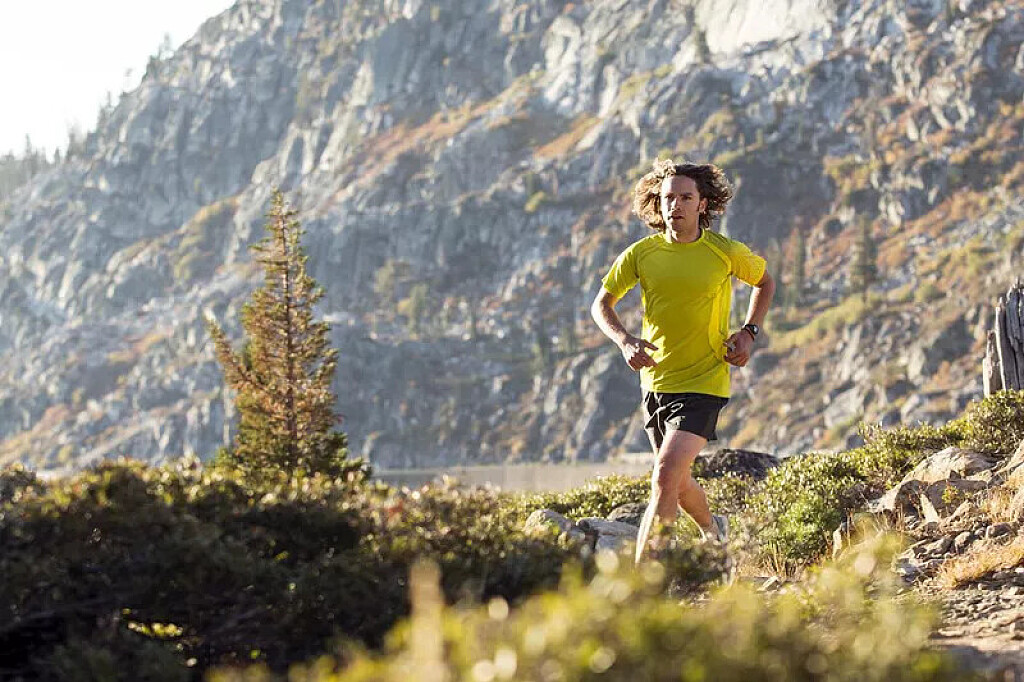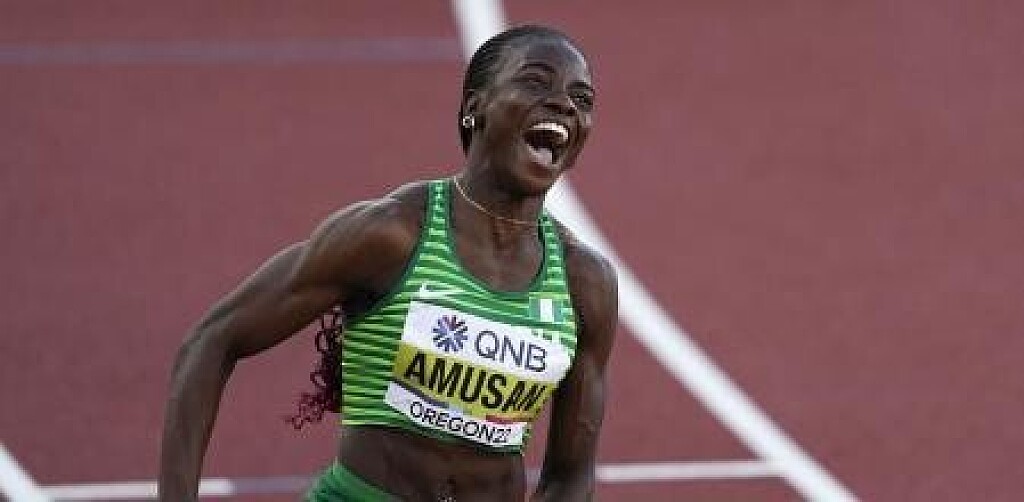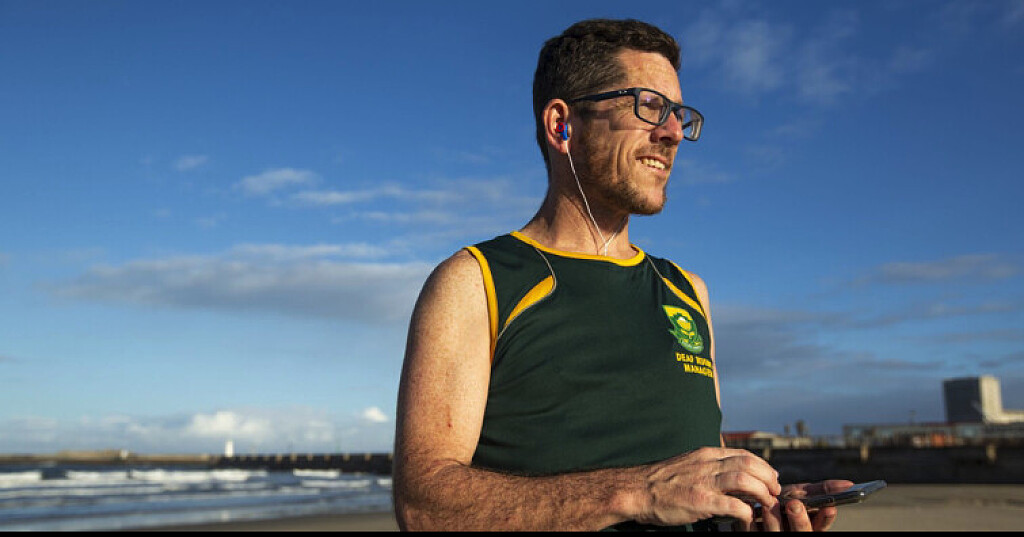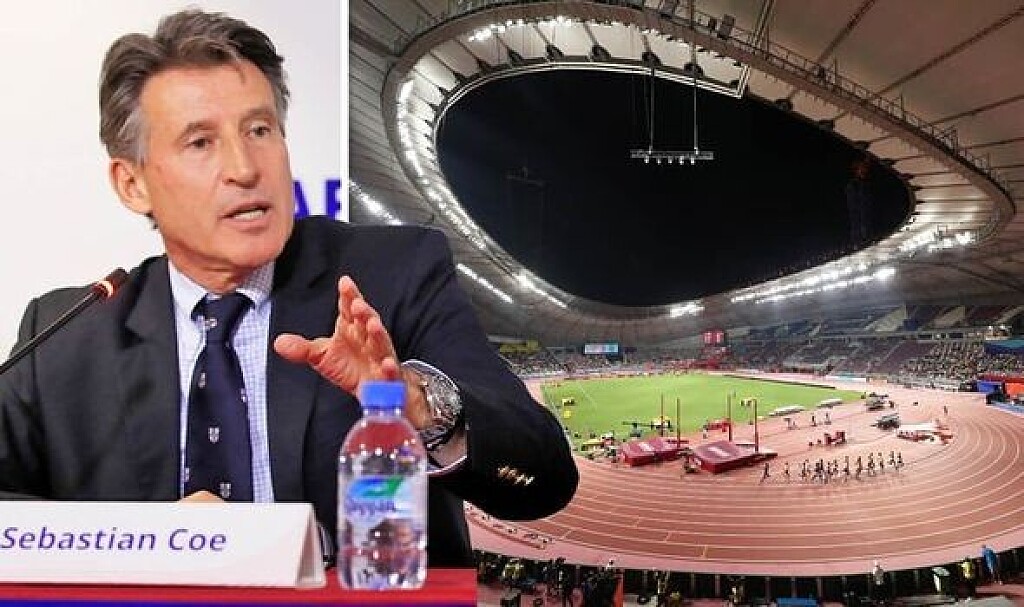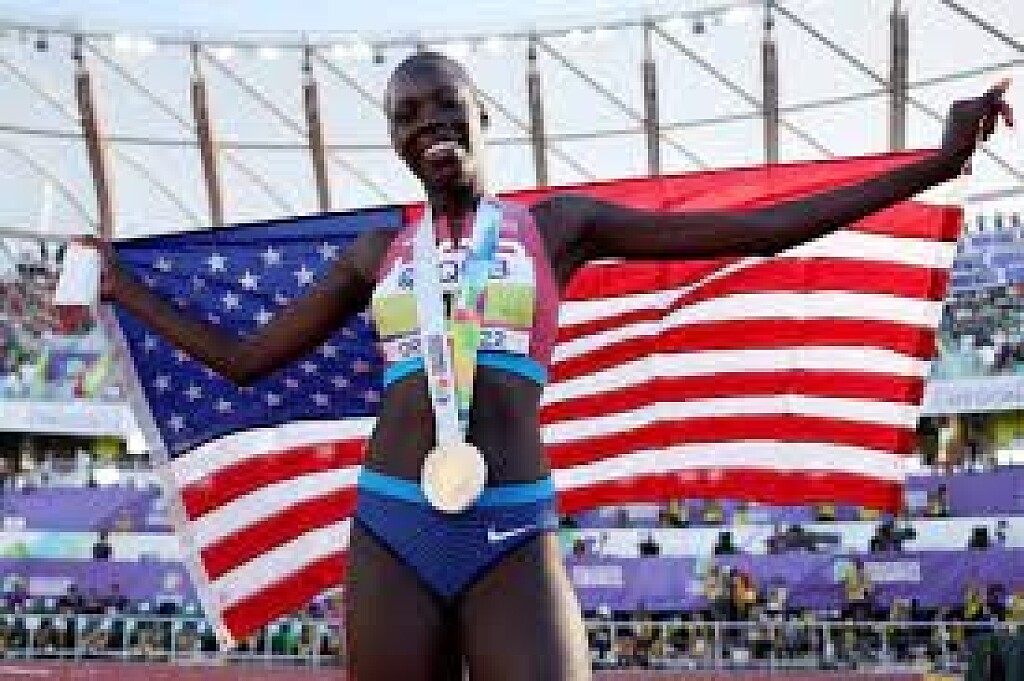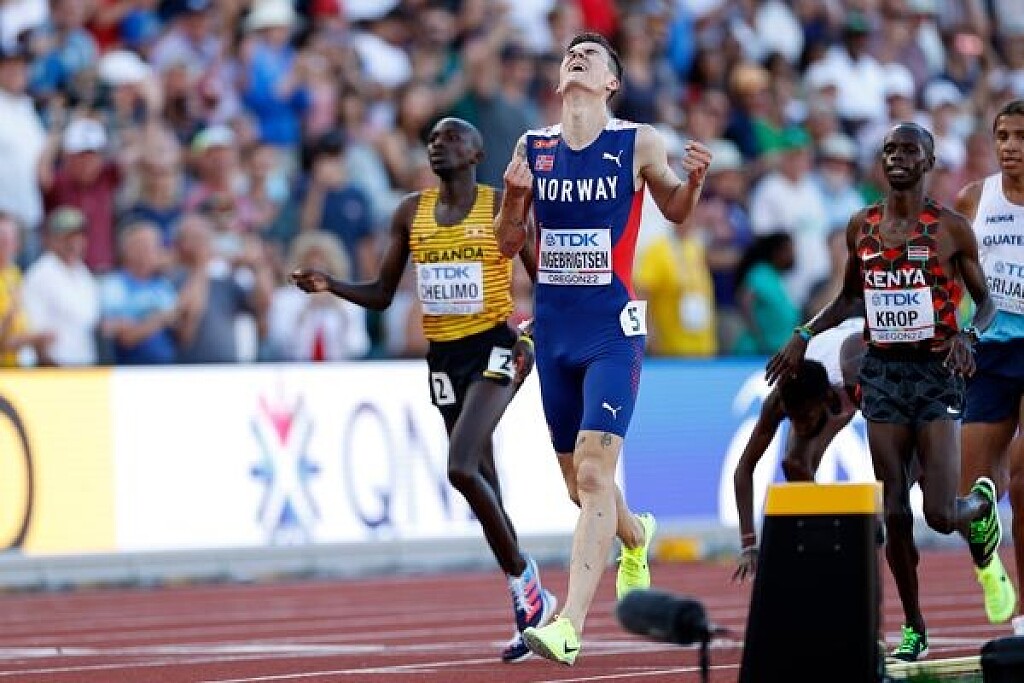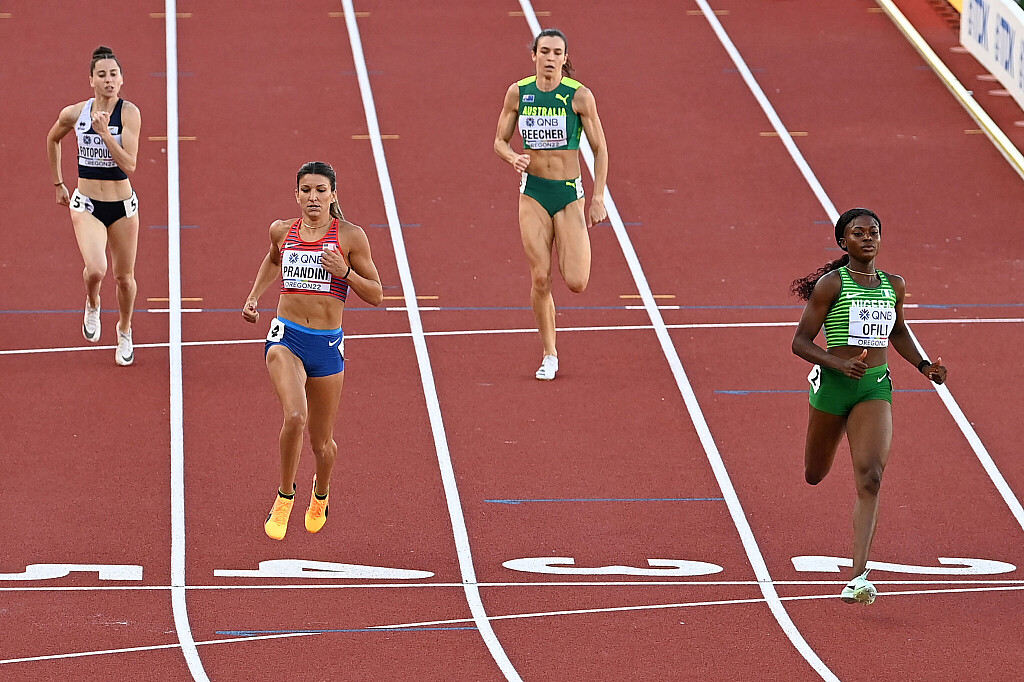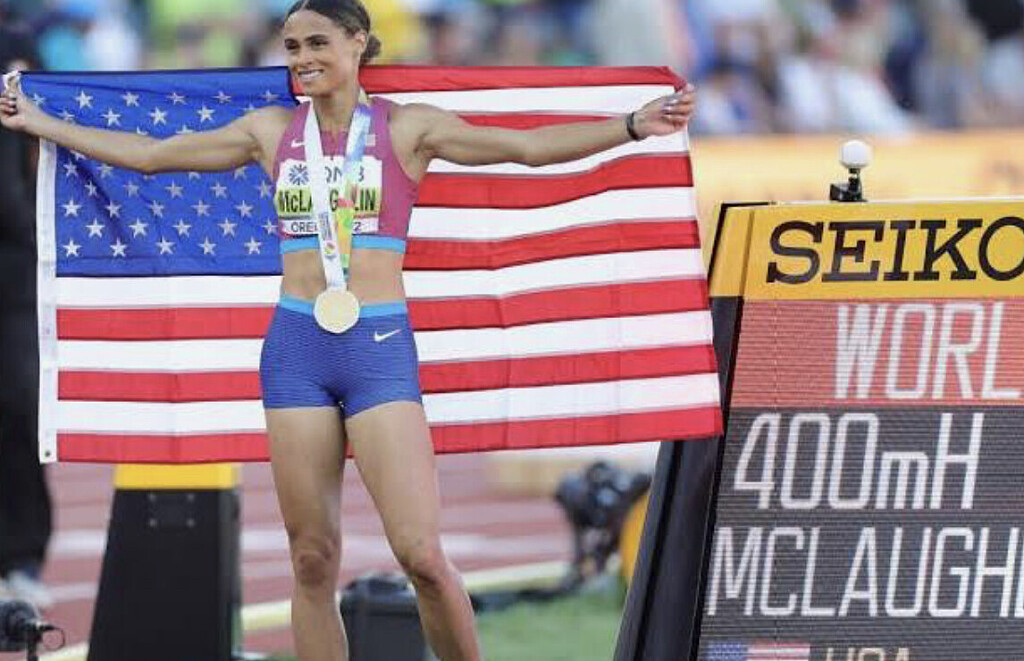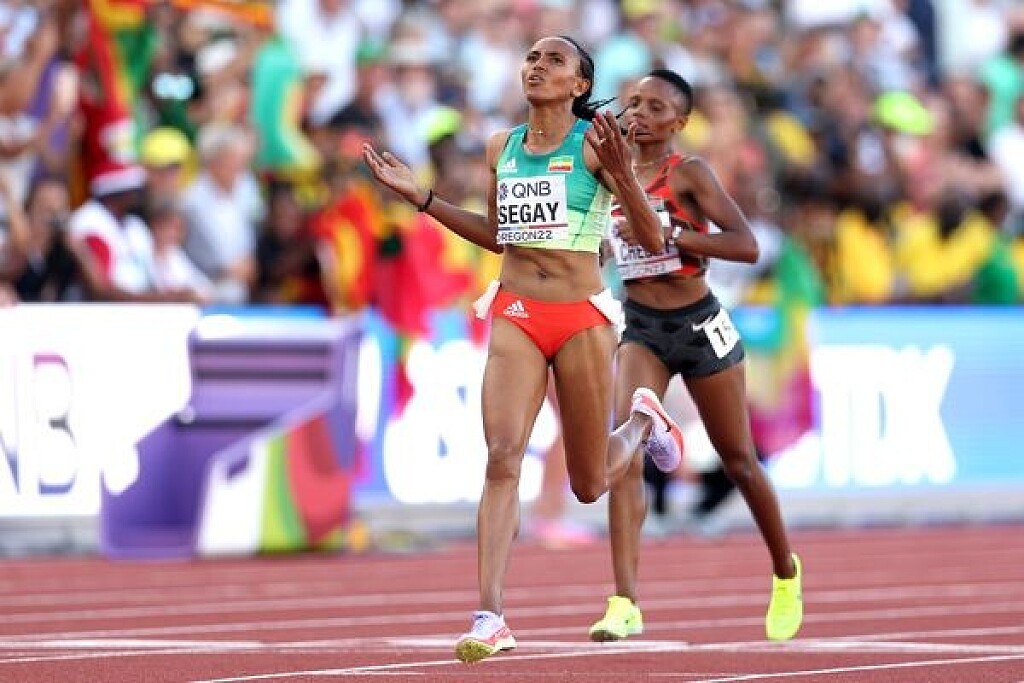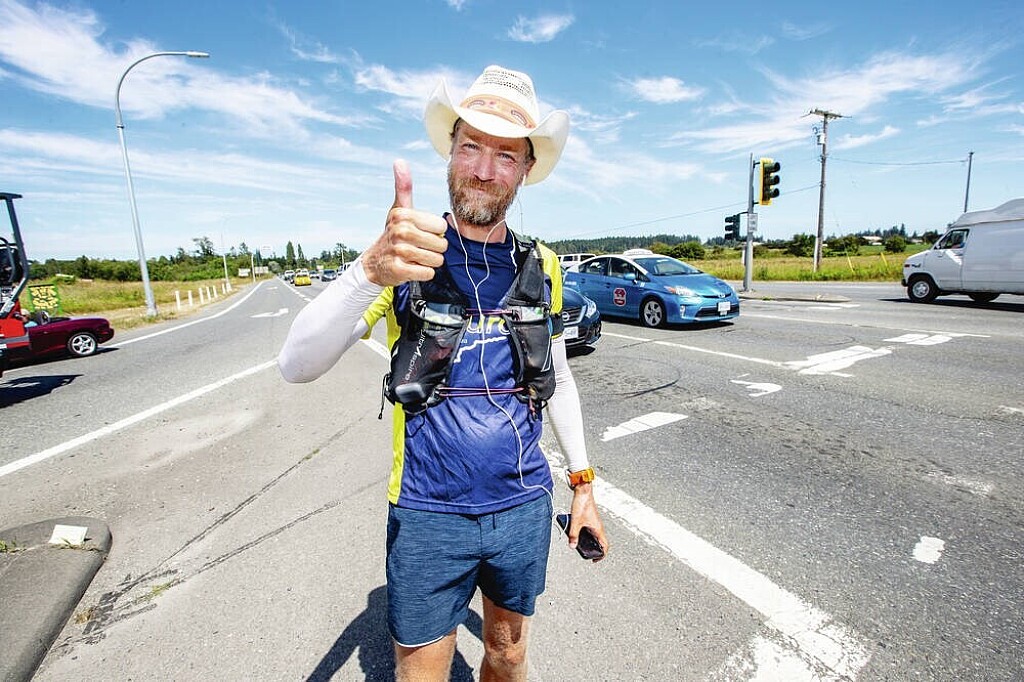Running News Daily
Top Ten Stories of the Week
7/30/2022
These are the top ten stories based on views over the last week.
What Is the Best Surface to Run On?
Some runners love trails, while others enjoy grass or sand or a synthetic track. Many may only really have access to asphalt roads, concrete sidewalks, or treadmills. But the best surface to run on depends on your body, your goals, and even your shoes.
Trying a New Surface

As a rule, healthy runners should always vary their running surfaces to improve strength and balance, and to help avoid injury.
Some helpful tips include:
Switch up your routes and incorporate trail running, some running on asphalt, track runs, and even the occasional sidewalk run.
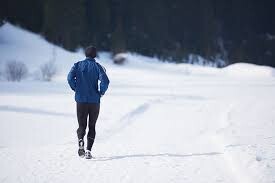
If you're training for a race, do the majority (but not 100 percent) of your runs on the same type of surface you’ll be racing on.
If you frequently run the same route, reverse direction every other run. That will adjust for any slant in the road, so you'll be working both sides of your body equally.
Adjusting to a new surface takes time. Remember, if you're testing out new terrain, you need to ease into it gradually.
Types of Surfaces to Run on
The best surface to run on is generally based on a runner's comfort level, access to different environments, and goals.
Asphalt
Although running on a sidewalk may sometimes be a safer choice (to avoid traffic), asphalt is a bit softer and therefore easier on your body than concrete. So, if you're running on a hard surface, opt for asphalt roads when you can, assuming they're safe.
Advantages of asphalt include consistency and uniformity, which makes it good for speed workouts. When you don't have to think about where you're placing each step, you can pick up your pace. This flat, solid surface also puts less strain on the Achilles tendon. Plus, asphalt roads are usually mapped, making it easy to track your mileage with an app, an online map, or your car's odometer.
Of course, asphalt's hard surface has its drawbacks—particularly the way it jolts the joints. You'll also need to take care to avoid traffic, potholes, and cambers (the slight downward incline at the very edge of the road).
Concrete
While harder than asphalt, concrete is a readily available running surface and one that is most practical for many people to use.
As an added bonus, concrete sidewalks are safe from traffic and tend to be smooth and flat. Research indicates that if you're not going too fast, the effect of the terrain, in terms of impact on the muscles and joints, is negligible.
Still, be aware of concrete cons. It's high-impact, especially if you are running fast. And you face obstacles such as curbs, pedestrians, and traffic when crossing streets.
Grass
Softer surfaces such as grass are definitely easier on your body than concrete or asphalt, but that doesn't mean there are no risks for common overuse injuries.
The good news about grass: It's low-impact, but still requires enough muscle strength to provide good training. You can do it barefoot or in minimalist shoes to improve foot strength. Grass is great for beginning runners because it means less pressure on the bottom of the foot, at least according to a few studies of plantar load.
However, runners can get injured on softer terrain, too, because it does not provide the same stability as a harder surface. Your feet will pronate, or roll inward, further, which could increase the strain on your muscles and joints, leading to injury (or re-injury in runners with a history of plantar fasciitis). Or you could twist an ankle on the uneven ground. Plus, grass is slippery when wet.
Trails
Like grass, dirt or wood-chip trails offer a cushioned surface for runners, and often pretty scenery to enjoy. They are a nice opportunity to switch things up.
Benefits of trail running include this lower-impact, joint-friendly surface, which means a lower risk of overuse injuries. It can also boost flexibility because of the need to make frequent adjustments in form and stride.
Of course, that could also be negative. A trail's tricky, uneven terrain (and sometimes slippery mud) puts runners at risk of twisted ankles and other traumatic injuries due to falls. It's also more difficult to run fast.
Sand
Running on sand is a whole different experience than many other surfaces. In fact, it's two of them, because of the contrast between wet and dry sand.
The benefits of beach running are evident: You get beautiful shoreline sights, sounds, and breezes. Sand (especially when it's wet) is very low-impact, but still offers an excellent workout because you have to resist against the surface as it gives. You will feel it in your calves the most, particularly if the sand is dry and deep.
Be careful, though, about running too far or too long on the beach, because the uneven, shifting surface is tiring. And if your beach path is slanted toward the water, you'll be running off-balance. The soft surface—while easy on the joints—is tough on the Achilles tendon.
Snow
If you live somewhere snowy and still want to get outside and run, it can be done. Warm clothing and grippers for your running shoes will help keep you safer.
Similar to sand, running on a snow-covered surface forces you into a slow and steady pace that still offers quite a workout. This could be good if you're coming off a break and need to be conservative. And running outside in winter keeps you off the treadmill.
Of course, you will still have to use caution. Snow and ice can be very slippery and unpredictable. The darkness of winter days also means more risk regarding safe conditions.
Track
If you're just recovering from a running injury and you're worried about a recurrence, your best bet is to run on a rubberized track, which will offer a level surface as well as good shock absorption.
Also on the plus side: Most high schools have tracks that are open to the public, so they're a safe, convenient option. Most tracks are 400 meters (about 1/4 mile), so it's easy for you to monitor your distance when you're running. That makes tracks a great option for speed training.
However, running laps can be tedious. If you always go in the same direction (typically counterclockwise), you'll tax the muscles on one side of your body more than the other. So it's important to switch directions. Even though the track offers a gentler surface than asphalt or concrete, going around the curves can still be tough on the joints. Plus, the rebounding effect of the synthetic surface can stress the IT band and calf muscles.
Treadmill
Most treadmills are padded, making them another good option if you're just back to running after an injury or you're injury-prone and want to reduce impact.5 Treadmills are also the best option if the weather conditions are too extreme for a safe run.
More treadmill pros include:
You set the pace and incline wherever you need it, and the machine forces you to keep up. (You can better simulate outdoor running by setting your treadmill at 1% incline.)
There are no obstacles or uneven surfaces.
You can run any time of the day or night without the risks you'd face outside.
Of course, treadmill boredom is real, and it may be harder to get a good workout when the belt is pushing you along. You also don't get the benefit of fresh air and breezes.
Again, you don't want to do all your running on a treadmill, as you might then have difficulty adjusting when you return to outside running. The bottom line is that varying your running surfaces will help prevent injuries and keep you from getting bored.
No matter what running surface you find yourself drawn to, your physical safety should always be at the top of your mind. If you find your buddy reacting negatively to the surfaces you're running on, seek medical attention; don't push yourself to the point of injury.
(07/27/22) Views: 126Christine Luff
Tobi Amusan, the accidental hurdler who became the world record-holder
The new world champion and world record-holder in the women’s 100m hurdles only got into hurdling through a quirk of fate.
Tobi Amusan started out as a sprinter and long jumper as a youngster in her native Nigeria.
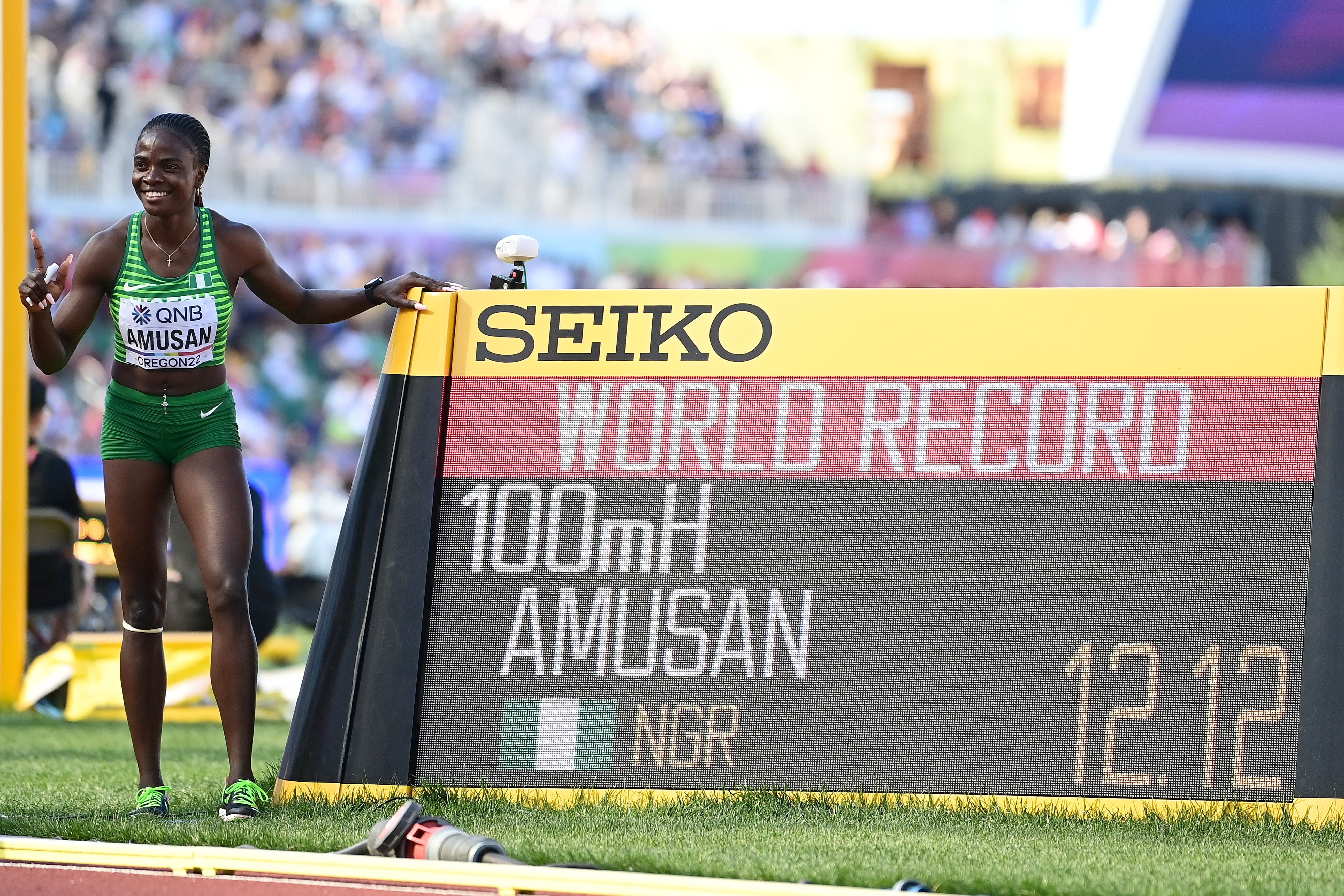
At 13, she turned up to compete in a local athletics meet, only to find that just one event remained on the programme: the hurdles.
Amusan’s coach encouraged her to enter. She ended up winning the race and the rest, as they say, is history.

The switch to the sprint hurdles paid off in sensational fashion on Sunday (24) when the 25-year-old Amusan smashed the world record, clocking 12.12 in the semi-finals at the World Athletics Championships Oregon22. She shaved 0.08 off the previous mark set by Kendra Harrison of the US in 2016.
Less than two hours later, Amusan came back for the final and ran another spectacular race to secure her first global gold medal and the first ever for Nigeria at a World Championships.
Amusan was clocked in 12.06, but the time won’t be recognized as a world record due to a tail wind of +2.5 m/s.
After fourth-place finishes at the 2019 World Championships in Doha and last year’s Tokyo Olympics, Amusan finally made it -- not just onto the podium, but to the top of the medal stand.
“I was the ‘almost girl,’” she said. “I got fourth, fourth, fourth. Now I finally did it.”
And with a world record for good measure.
“The goal was to come out and to win this gold,” Amusan said. “I just did it. Honestly, I believe in my abilities but I was not expecting a world record at these championships. You know, the goal is always just to execute well and get the win. So the world record is a bonus. I knew I had it in me but I could not believe it when I saw it on the screen after the semis. But it was just a matter of time.”
Looking back on how she made it here, Amusan said: “It has been a long journey.”
Born in the town of Ijebu Ode in the western Nigerian state of Ogun, Amusan gradually made the transition to hurdles as a teenager.
She continued competing in sprints and long jump but managed to squeeze in one hurdles session a week. She put cones and tires on the track to jump over because there were no hurdles in her town.
When she was replaced as a member of Nigeria’s 4x100m relay squad at the trials for the 2014 African Youth Games, she figured she had nothing to lose and entered the hurdles. She won that and went on to earn silver at the African Youth Games in Botswana.
Then followed a trip to Ethiopia in 2015, where she won African U20 gold, followed by a breakthrough victory at the All-African Games in Brazzaville, Congo.
“It was one of the biggest milestones of my career; winning that championship set me up for who I am today,” she said.
There was no looking back; she was now a full-time hurdler.
In 2016, Amusan received a scholarship to attend the University of Texas, El Paso, where hard training brought her personal best down from 13.10 to 12.83.
At UTEP, she worked with new coach Lacena Golding-Clarke, a three-time Olympian from Jamacia and the 2002 Commonwealth Games 100m hurdles champion.
There were setbacks along the way, of course. At the U20 world championships in Bydgoszcz, Poland in 2016, Amusan struggled with her technique and finished in fifth place. She was so devastated that she thought about quitting the sport.
But she regrouped and, after reaching the semi-finals at the 2016 Rio Olympics, Amusan went unbeaten in the 2017 outdoor US collegiate season and won the NCAA title in a PB of 12.57.
She went into the 2017 world championships in London as the season’s fourth-fastest hurdler, but cramped up in the cold conditions and failed to make the final.
“After London,” she said, “I learned that the fact that I was in the mix, knowing I was capable of doing stuff at this age – I was just 20 – and being ranked in the top eight makes me confident that when I get my technique right, my speed right, and get a bit stronger, I’ll be fine.”
Amusan turned pro at the end of that year and went on to win gold at the 2018 Commonwealth Games in Gold Coast, Australia, at the age of 20. She also triumphed at the African Championships later that year.
In 2019, she finished just 0.02 shy of a bronze in Doha. Last year, she came 0.45 from a medal at the delayed Tokyo Games.
“I don’t think there is a track and field event which can teach humility quite like the sprint hurdles,” Amusan said. “You can be the fastest in the field but one mistake can spell the end for your race. A hurdler should never go into any race with any level of complacency or arrogance. It teaches you to be humble.”
For now, at least, Amusan can afford to be a little less humble.
After all, she’s simply the fastest of all time and the best in the world.
Not bad for someone who became a hurdler by chance.
(07/25/22) Views: 94World Athletics
Meet the Deaf Ultra Racer Fueled By Music
Runner Tim Stones can't hear a starting gun, but absolutely loves the Chariots of Fire theme.
South African runner Tim Stones has been deaf since birth, and yet Stones learned to play the piano and sing in choir when he was a child. Today, with the help of hearing aids and a cochlear implant, he composes music and can play by ear. He has also completed 25 marathons and 25 ultras, all without being able to hear the starting gun, the crowds, or the runners around him.
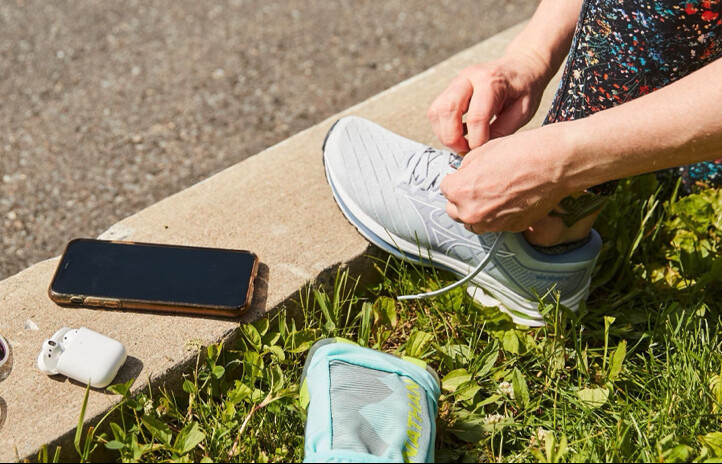
That might seem to make for a bleak race, but Stones insists that it gives him room to hear his own thoughts, and that he runs to a never-ending stream of internal tunes. Here, Stones, 42, discusses how music became one of the greatest forces for good in his running life.
Why did you start running?
TS: I went for my first proper run at the age of 11 or 12, on the spur of the moment, initially to stamp the anger I felt through my feet. I was on my high school cross-country team. In 1999, when I was 20, I ran my first marathon, quickly followed by my first 100-kilometer race. Recently, I completed my 50th marathon or ultra race. Running has become my primary form of emotional release. It is how I process life, and make peace with it.
How do you experience your runs?
TS: I run without my hearing devices on, as I find the cacophony of sounds overwhelming when I am feeling the rhythm of my feet. Silence helps me keep my rhythm and find my pace. As my vision is also compromised [Stones’s vision deteriorated in recent years to the point that he can’t drive], I have to focus intensely on the actual act of running, to avoid obstructions and potential mishaps the best I can.
Are there differences in the way you compete?
TS: I cannot hear the gun, so usually the starter holds a flag or drops an arm, and off I go. It’s not ideal, and in shorter distances it is a definite disadvantage. But in longer races my deafness can be an advantage in a way, as I am not distracted by noise. Deafness forces me into myself. I am especially fond of multiday circuit racing: I have competed in events ranging from 24 hours through to 10 days. A highlight was breaking the South African age-group record for the latter, with 886 kilometers in 2017.
What can you hear with and without your hearing aids?
TS: When I was 5 years old, I received my first pair of hearing aids and learned to read and to speak clearly with my voice. Over the years my hearing has further deteriorated. I received a cochlear implant for my left ear and wear a super-power hearing aid in my other ear. Without them, I hear nothing in my left ear, and in my right ear I can pick up some sound, but rely on lip-reading to communicate. With my devices on, I can pick up a wide range of sounds, but still need to see someone’s face for speech.
How does that impact your musical experience?
TS: I cannot grasp music without my devices on. But it may surprise readers to know that there are many deaf and deaf-blind musicians who have found ways to feel the music and understand rhythm despite having no hearing at all. Some, like Beethoven, even composed songs. With the cochlear implant, music sounds a bit different, clearer, to me. The best part has been being able to hear the actual lyrics to songs for the first time. I was shocked to discover I had been singing completely alternative lyrics to my favorite songs since childhood!
When did you develop your passion for music?
TS: I was introduced to music at the age of 6, starting piano lessons soon after acquiring my first pair of hearing aids. My mom hoped that by learning to understand the rhythm of music I would be able to grasp the nuances of speech more quickly. Now I play piano and sing. Being able to enjoy music with my sons is food for the soul.
How has your musical life impacted your running?
TS: Music plays a crucial part in my running journey. Even though I can’t hear or listen to music when I run, I hear music within. When I find myself getting tired, especially in the longer ultras, I find I can push through by thinking of a song that speaks to me in that moment, and I sing it, sometimes silently, sometimes out loud. It gets me back into a rhythm, and my feet respond to the sustained beat. More broadly, music helps me navigate the myriad experiences of a complex life. Running does exactly the same.
Are there certain songs you come back to again and again?
TS: My heart goes into overdrive whenever I hear “Chariots of Fire.” Sometimes I ask my sons to play it just before I go out for a longer training run. It gets me into the groove like nothing else can. I am also a huge fan of ’60s music. Mostly, though, I opt for songs of faith that uplift and inspire me to keep on keeping on.
(07/24/22) Views: 92Runner’s World
Sebastian Coe hopes current athletes break 1980s records
Sebastian Coe wants the current generation of athletes to finally take down world records from the 1980s which he concedes “may not be the safest on the book”.
The issue has become a major talking point in Eugene after Shericka Jackson ran a stunning 21.45sec to win world 200m gold, a time that put her second on the all-time list behind Florence Griffith Joyner. The controversial American, who also broke the 100m record in an era when drugs testing was sporadic, died in 1998.
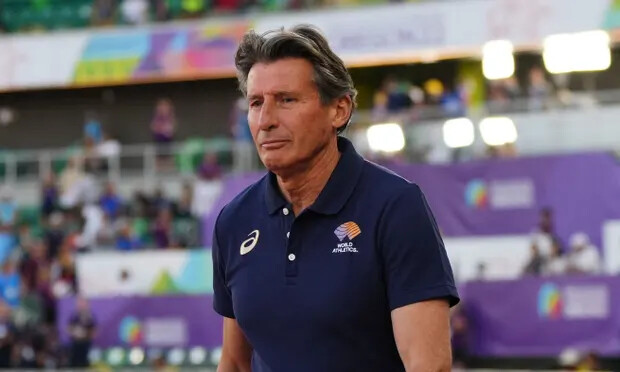
A number of other records in women’s sport have remained untouched since the 80s including the 400m, 800m, high jump, long jump, discus and shot put. They were all set by athletes from countries in the then eastern bloc.
“Legally, they are the existing records,” said the World Athletics president. “Legally, there’s nothing you can do or say beyond the evidence of a positive test. But this was my era so I have to accept it was a time when testing was a bit sporadic. We know it was a different era. There are records there that you look at and go, there’s nothing legally we can do about them but they may not be the safest records on the book.”
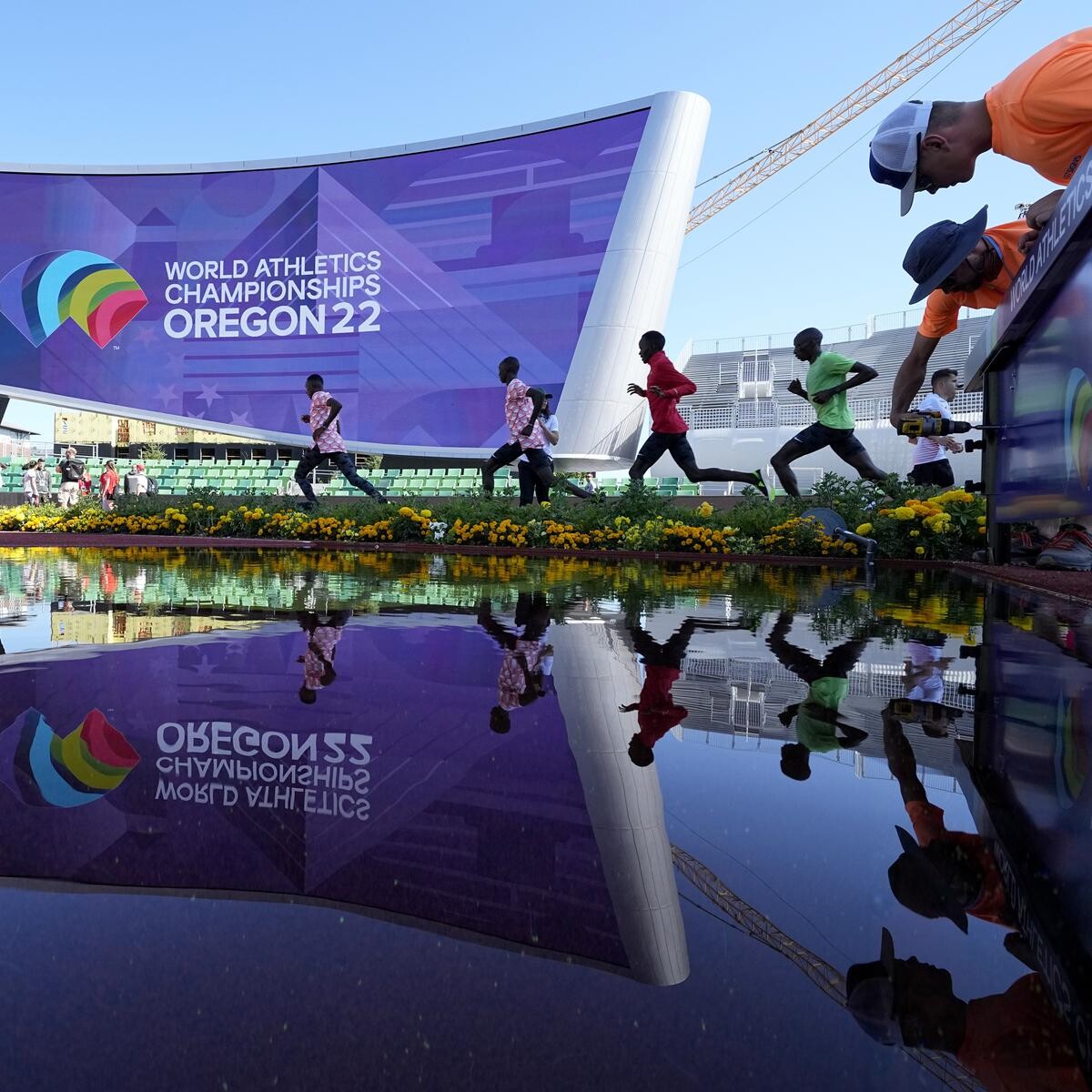
Lord Coe said it was impossible to strike the old records, but suggested the advent of super spikes and faster tracks could see more of them broken in the coming years. “I would prefer that there is an organic change through the Shericka Jacksons, who are now being tested regularly,” he added. “We have the Athletics Integrity Unit, we have their own national anti-doping agency that is now working far better than it was when I came into office, you’ve got agencies around the world.”
Asked to compare the modern era with the 80s, Coe added: “It’s a different world. I was part of that world so I’m not saying I was significantly different to anyone else there – well, I wasn’t a cheat. But the reality is there is very little legally you can do and I think we have to be realistic about it.
“There’s nothing that I’m in a position to do to rewrite the record books but I’m open about it – some of these records are not safe records.”
However, Coe, who himself set an 800m world record in 1981 that remained unbroken until 1997, admitted he felt some sympathy for those stuck behind the iron curtain who were forced to dope by their governments. “When you look at athletes that had to come through that system, you have more sympathy than you do for the athletes who chose, of their own volition in liberal democracies, to do it,” the double Olympic champion added.
(07/23/22) Views: 91Sean Ingle
Athing Mu Became the First American to Win the 800 at the World Championships
Athing Mu hasn’t lost an 800 in over two years, since February 2020. Today in Eugene, Oregon, the streak continued.
Mu’s 1:56.30 performance in the 800 meter final makes her the youngest woman to ever win both Olympic and World Championships gold.
“I’m thankful to be holding the momentum from Tokyo last summer,” she said. “But today was a rough day for me. I just wasn’t physically where I wanted to be.”
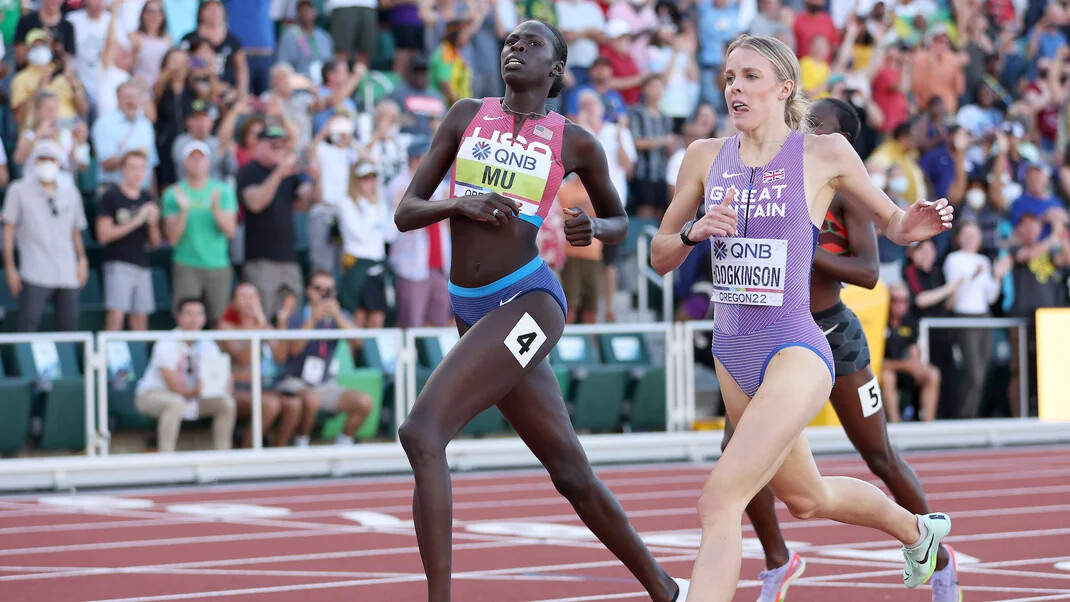
In the final 100 meters, Keely Hodgkinson of Great Britain came up on Mu on the inside. Mu was running on the outside of lane one, which gave Hodgkinson a clear window to sneak through and pass. But Mu wouldn’t let up. As soon as she sensed how close Hodgkinson was she cut back in to the middle of the lane to prevent the pass. Hodgkinson, who is also 20, finished in second in a time of 1:56.38, which is her second silver medal in two years; she also placed second in the Tokyo Olympic Games last summer.
When asked about the potential tactical error, Mu said, “I didn’t want to automatically go to the inside. I don’t really pay attention to where I’m at in the lane.” Mu’s background is as a sprinter, and they’re taught to run on the outside of lane one. A distance runner would never do that.
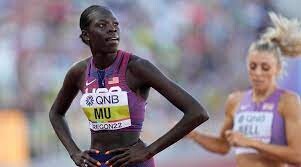
Mary Morra of Kenya finished third in 1:56.71, a personal best. The three women all improved on Mu’s season best time of 1:57.01, which was the previous world lead this year.
Even though she won the race, Mu said she didn’t feel that great out there. This entire year she’s been winning by small margins, as though she does just what it takes to win. Last year there were a number of times when she wasn’t afraid to run alone off the front of the pack. It’s true that her times last year were faster: She ran 1:55 twice in 2021.
“I’ve gone through so many changes, so many adjustments this year,” she said. “Not everybody sees it, but it was a lotjust being able to come out here. Winning means a lot to me because I know what I’ve been going through.”
Mu cites her support system and her faith as the main reason for her steadiness. Her boyfriend, Brandon Miller, also competed in the 800 this week at the World Championships.
Looking to the future, she said, “For now, I’m just trying to take it day by day, race by race.”
(07/25/22) Views: 89Matt Wisner
Ingebrigtsen wins first world title with 5000m gold in Oregon
Norway’s Jakob Ingebrigsten had an Olympic title, but he had never won a World Championships gold medal.
After being upset in the 1500m by Jake Wightman only a few days ago at the World Athletics Championships Oregon22, a world gold still eluded him.
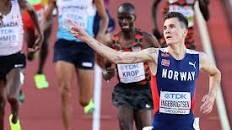
If he wanted to end his drought, he was going to have to topple a star-studded field in the men’s 5000m that included the world record-holder, Uganda’s Joshua Cheptegei, who had earned gold over 10,000m earlier in the championships.
But Ingebrigtsen did exactly that, winging up the pace in the final kilometre to win in 13:09.24. Kenya’s Jacob Krop took silver in 13:09.98, while Uganda’s Oscar Chelimo earned bronze in 13:10.20, a season’s best.
Ingebrigtsen spent almost half the race towards the back of the pack and didn't make his move until after the field had covered two kilometres, going from 10th place into fifth. He remained near the front over the next few laps, then he moved into first with 600 metres left.
From then on, he never relinquished the lead. Ingebrigtsen led 11 men through the bell, less than a second spread among them. As the pack strung out and the finalists started to unleash their finishing kick, Ingebrigtsen held off all of them and extended his lead as he neared the line.
The Norwegian could even afford to take a couple of last looks behind him, before flashing a ‘No.1’ gesture to the fans on the homestretch.
“It feels amazing to win this gold,” said Ingebrigtsen. “This is already my fifth attempt to become a world champion outdoors and my third World Championships. So finally, I became the world champion.”
Cheptegei led through the first three laps, but by the halfway mark, he had dropped to eighth. Leading the pack was Kenya’s Nicholas Kipkorir Kimeli and Daniel Simiu Ebenyo, who often took turns at the front early on. In pursuit were Guatemala’s Luis Grijalva, Ingebrigsten and USA’s Grant Fisher.
Through 4000m, just 0.75 separated the top 12. Krop had taken the lead, but the race remained conservative, with no one looking to push the pace, setting the stage for the raucous bell lap.
Ingebrigtsen and Krop passed through the bell first, holding their positions the rest of the way. However, Chelimo was still in ninth, and Fisher was in third, only 0.11 behind the top two. Chelimo remained in eighth until the final 200 metres, where he moved into fifth, still trailing Fisher and Canada’s Mohammed Ahmed.
As the three men came around the curve, with the bronze still up for grabs, Fisher hit the inside rail, causing the American to drop behind. Chelimo took advantage, as did Grijalva, and both men moved ahead. Chelimo’s kick was too strong for either Grijalva or Ahmed to handle, as he edged both men by less than 0.25.
Grijalva finished fourth, achieving the best finish for his country in any event at the World Championships.
“It feels amazing. I have always run a PB in the races,” said Grijalva. “I almost won a medal, the first for Central America.”
Krop said he knew the race would be tactical, but he was ready for it.
“They just made me push on the last lap and attack,” said Krop. “In the end, it looked like everybody wanted to get to the podium. I had my position and when I kicked, I wanted to maintain the spot, but Jakob had a strong kick too.”
For Chelimo, the bronze finish comes after a few disappointing outings recently.
“I had some difficult times in the past years, I was happy last year to qualify in Tokyo, but then I came last so I had to ask why,” said Chelimo. “But my coach told me that I am a champion. He said, ‘forget about the past, just continue racing’.”
(07/24/22) Views: 81
Elias Esquivel (World Athletics)
World Athletics to introduce repechage round in track events for Paris 2024
Runners knocked out in the opening round of track events from 200 to 1500 meters at the 2024 Olympic Games in Paris will get another opportunity to continue in the competition after World Athletics announced they are to introduce a repechage round.
Under the new format approved by the World Athletics Council, athletes who do not qualify by place in round one heats, including the hurdles, will have a second chance to qualify for the semi-finals by participating in repechage heats.
The word repechage comes from the French verb "repêch", which literally means to "fish up again".
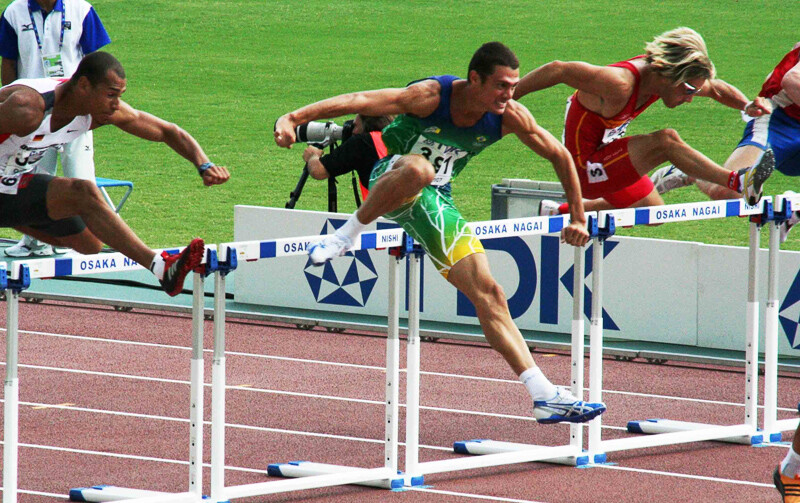
Idiomatically, it means "to get a second chance".
The repechage will replace the former system of athletes advancing through fastest times in addition to the top placings in the first-round heats.
These events will now have four rounds - round one, repechage round, semi-finals and the final, with schedules varying according to the specific nature of the event.
The new format means that every athlete competing in the events with a repechage round will have at least two races at Paris 2024.
As the 100m already has preliminary heats, before round one, the repechage will not be introduced in this event.
In addition, the repechage will not be introduced in distance events as the need for proper recovery between rounds makes the format impractical.
A number of sports already use the repechage system, including judo, rowing, taekwondo and wrestling.
But, unlike athletics where a runner could be knocked out in the first round and still go on to win gold thanks to the repechage, a competitor in these sports can win a bronze medal at best.
Cycling and rowing, however, use a similar system to the one athletics is proposing.
"After consulting with our athletes and broadcasters, we believe this is an innovation which will make progression in these events more straightforward for athletes and will build anticipation for fans and broadcasters," World Athletics President Sebastian Coe said.
"The repechage rounds will give more exposure to our sport during the peak Olympic period and will be carefully scheduled to ensure that every event on our Olympic programme retains its share of the spotlight."
The final regulations of the format, including the timetable as well as system of advancement in each event, will be announced well in advance of the Olympic Games, World Athletics have promised.
(07/25/22) Views: 81Duncan Mackay
McLaughlin obliterates world 400m hurdles record with 50.68 in Oregon
Sydney McLaughlin has broken the world 400m hurdles record for the fourth time of her career, obliterating her previous best with 50.68 to win her first world title in the event at the World Athletics Championships Oregon22 on Friday (22).
In another epic race in front of a passionate home crowd, the 22-year-old Olympic champion raised the bar yet again. Behind her, Netherlands’ Olympic bronze medallist Femke Bol secured silver in 52.27, while USA’s former world record-holder Dalilah Muhammad clocked 53.13 for bronze.
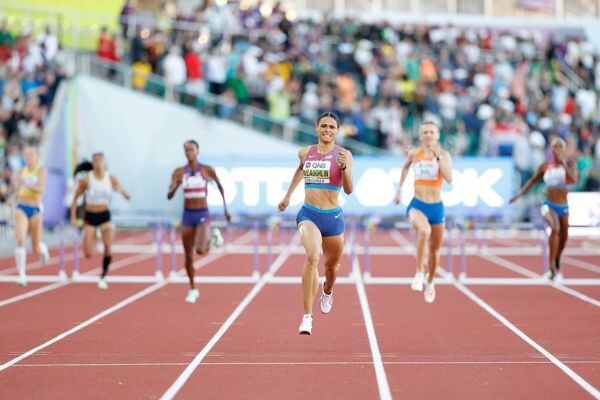
It is the third world record that McLaughlin has set at Hayward Field. Her first came at the 2021 US Olympic Trials, when she clocked 51.90 to improve on the 52.16 global mark that Muhammad had set when winning the 2019 world title ahead of her compatriot.
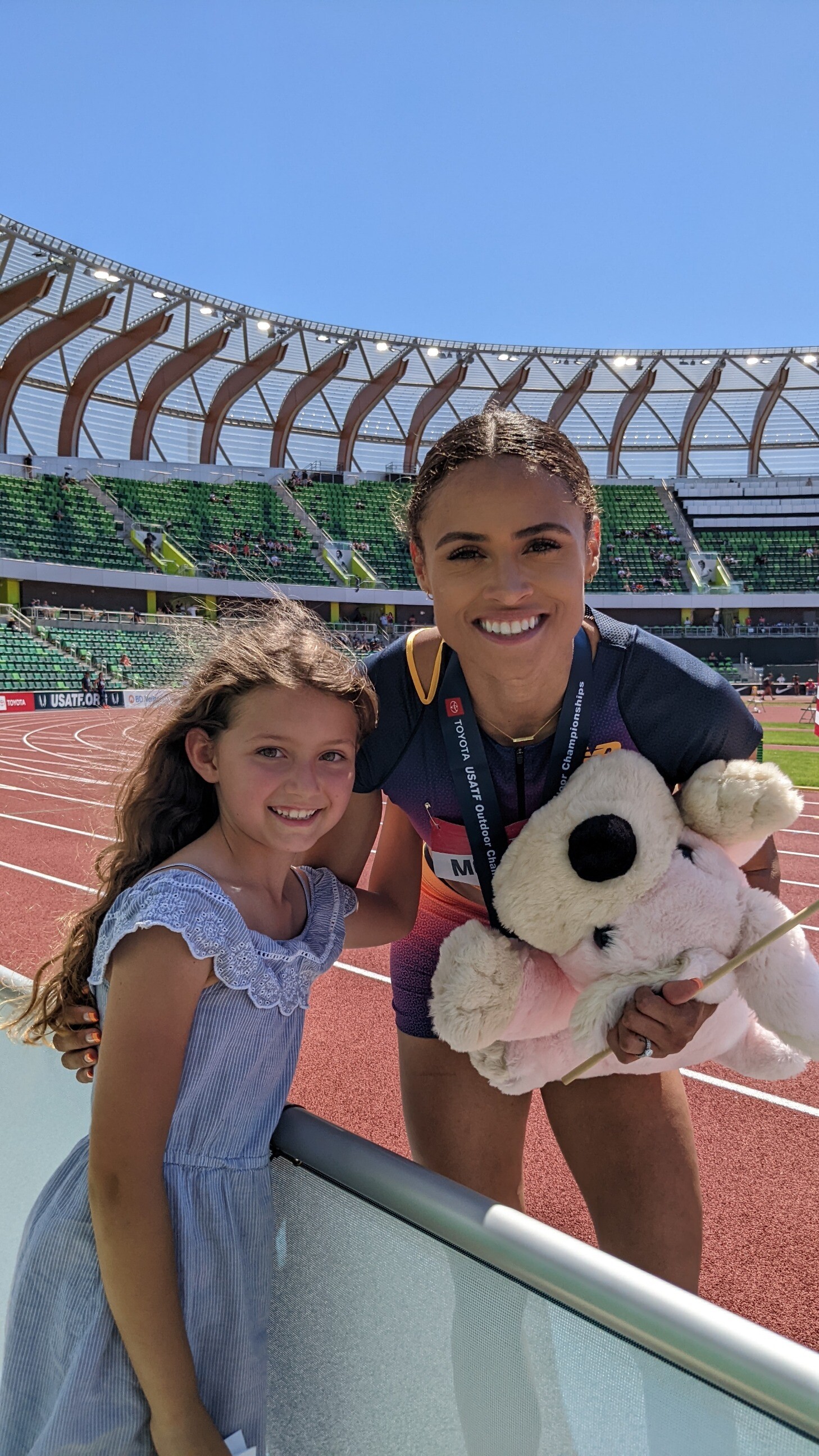
Just over a month later, McLaughlin ran 51.46 to win the Olympic title in Tokyo, and she broke the record for a third time at this year’s US Championships in Eugene on 25 June, clocking 51.41.
(Third photo of Sydney taken at USATF Championships. Photo by Jivko)
(07/22/22) Views: 80World Athletics
Tsegay wins women’s 5000m world title after dramatic last lap
It was a 5000m race that came down to the final 100m, Ethiopia’s Gudaf Tsegay using her 1500m speed to prevail in a thrilling sprint finish and gain her first global outdoor gold on the penultimate day of the World Athletics Championships Oregon22.
The world indoor 1500m record-holder, who claimed the indoor title in that discipline in Belgrade in March, returned to the track five days after claiming 1500m silver behind Kenya’s Faith Kipyegon at Hayward Field and she had the 5000m title as her target. After a tactical test, she achieved her aim, clocking 14:46.29 as little more than a second separated the top three. Kenya’s 2018 world U20 winner Beatrice Chebet was right behind her, securing silver in 14:46.75, while Ethiopia’s Dawit Seyaum got bronze in 14:47.36.
Three years after placing runner-up to her compatriot Hellen Obiri – the two-time world 5000m champion who focused on the 10,000m in Oregon – Margaret Kipkemboi finished fourth in 14:47.71 and Ethiopia’s recently-crowned 10,000m champion, Letesenbet Gidey, was fifth in 14:47.98, one place ahead of Netherlands’ double Olympic champion Sifan Hassan in 14:48.12.
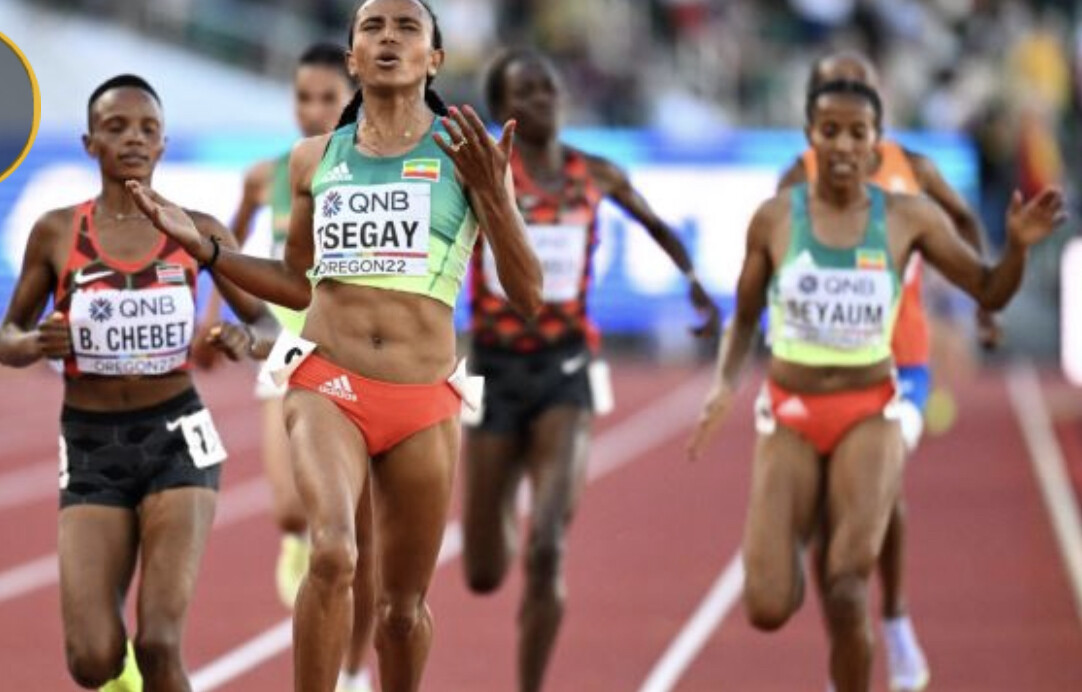
“The hard times were at the Olympics in Tokyo, because I was injured there” said Tsegay, who still managed to race for 1500m bronze at last year’s Games. “Not today.”
With a final 1500m of 4:14.59 and a last lap of 59.95, the 25-year-old pulled away from Chebet and Seyaum down the home straight, executing her plan.
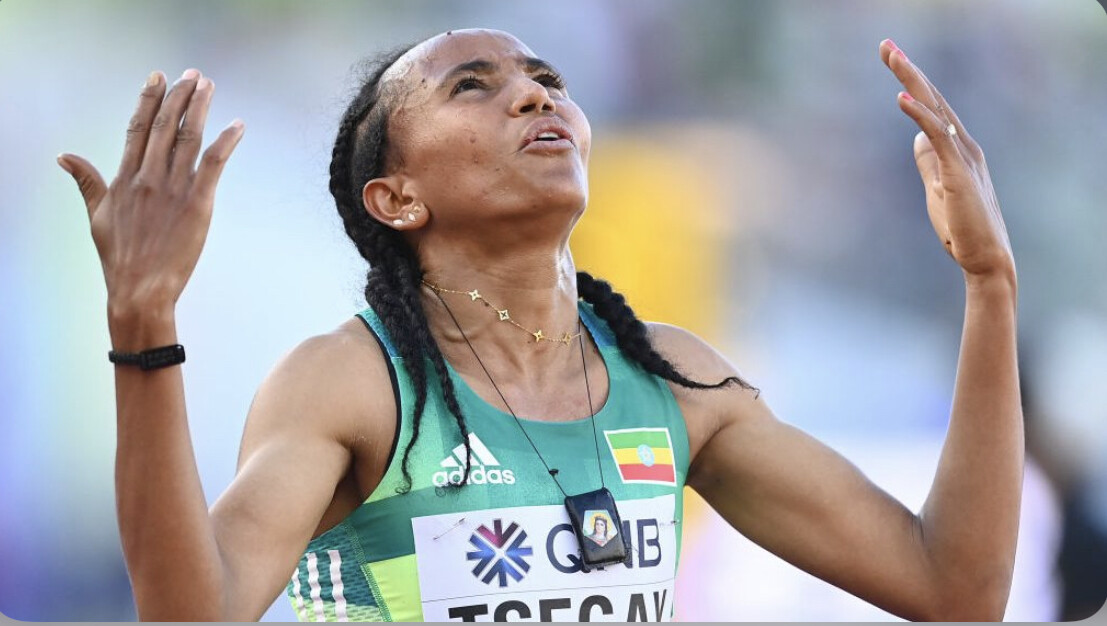
“I have been training well for 1500m and this helps sprint on the home stretch,” added Tsegay, who claimed her 2014 world U20 1500m silver in Eugene. “I know that Sifan is a top athlete and she is also a 1500m runner, so she has the speed. When she came in front, I sped up even more and won the medal.”
It was that attack from Hassan at the bell that launched Tsegay into action. Always near the front, Tsegay led through the first 1000m in 3:14.21 ahead of Kazakhstan’s Caroline Chepkoech Kipkirui, Seyaum and Gidey. Gidey and Tsegay continued to take turns at the front and Tsegay was to the fore as 3000m was reached in 9:02.79. The world 10,000m champion was a stride ahead with four laps to go as she and Tsegay continued to control the race, with Chebet right behind them.
Glancing over her shoulder with three laps remaining, Tsegay led the 10-strong group and Gidey moved ahead along the back straight. One lap later, Tsegay kicked ahead, but not by enough to shake off her rivals. With her eyes on the big screen, she could see Hassan move from seventh to fifth, and by the time they reached the bell the Olympic champion was on her shoulder.
The race was down to a six-strong battle for the medals. With Tsegay in front, Hassan moved ahead of Gidey as they ran down the back straight for the final time, taking the inside line to challenge Tsegay on the bend. Chebet was running wide, but holding her place. As they left the curve, Hassan no longer seemed the biggest threat, with Chebet providing the challenge. But no one could match Tsegay’s finishing speed and she strode ahead down the home straight, on her way to victory. Chebet held on for silver, as Seyaum came through for bronze.
“It was a matter of tactics,” said Chebet, whose CV includes the 2019 world U20 cross country title as well as her 2018 world U20 track win. “I was well positioned.
“Although I am young, I've run many races with elite athletes at the Diamond League. They are not new to me. This medal will make a good difference for me.”
For Seyaum, the bronze medal was welcome after years of injuries. “I hoped to get a place on the podium,” she said. “I hoped and expected to become a medallist in this event. For five years, I was having injuries, so this result is very special for me.”
And Hassan, who finished fourth in the 10,000m seven days earlier, explained how she was happy to be back on the international stage. “I started to train like two months ago and today, I did my best and I gave everything,” she said. “For me, it is important if I give everything and race smart, it does not matter what the position is.
“I think I really overworked last year, so I wanted to have a break mentally, because athletics is not only about running but also about motivation. I took an almost seven-month break. I am happy to be back, and I will try for more golds next year.”
(07/23/22) Views: 80
Jess Whittington (World Athletics)
Dave Proctor ends his cross-Canada run in Victoria after 67 days
Right on schedule, Dave Proctor of Okotoks, Alta. wrapped up his cross-Canada record quest in Victoria late Thursday afternoon. Proctor completed his 7,159km run after 67 straight days of running, and (pending verification) will have topped Al Howie’s cross-Canada speed record of 72 days, 10 hours, set in 1991. Proctor began this record attempt with a hat dip in St. John’s, and has been steadily running around 105 kilometers a day across the country, bumping that distance up to 107 km over the last few days to be certain of hitting the target.
This was not Proctor’s first attempt at the record; in 2018, running in the other direction, he was beset by a back injury and forced to quit in Manitoba after 32 days on the road. He then had to put off making his record attempt due to COVID. He shared gratitude for the journey in a social media post Thursday evening, calling the experience “priceless.”

Proctor is one of Canada’s most accomplished and best known ultrarunners. He holds course records at races including Lethbridge, Alta.’s Lost Soul Ultra (where he ran the 100-miler in 2021 in 19:05:00, beating his own previous course record of 19:27:00); he set the 48-hour Canadian record at 6 Days in the Dome in 2018 (358.163 km); in addition, he holds Canadian records over 24 hours (257.093 km) and 72 hours (500.077 km).
Proctor shared daily posts on Instagram that included his mileage, a ‘ditch find’ of the day, and his daily progress. In a recent post thanking the watch brand Coros for their sponsorship, he mentioned that he would be making his COROS data available post-run, but warned, “they’ll be big files.”
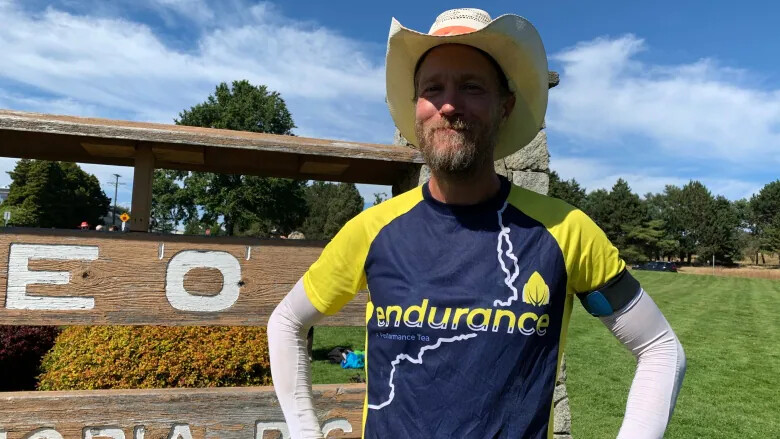
American ultrarunner Pete Kostelnick is familiar with a journey like Proctor’s: he holds the trans-American speed record of 42 days, 6 hours, 30 minutes. Kostelnick spoke to Proctor on Thursday during the final leg of his run, and shared some insight into how he is probably feeling right now.
“It’s bittersweet, but mostly sweet. After over two months, Dave’s new normal is very simple–eat, run, rest, repeat. Soon he’ll be back to ‘normal’ life, which, quite honestly, is a shock to the body and mind. In something like this, I think also a lot of the reward comes while you’re doing it,” Kostelnick said. “It’s a powerful feeling to know you just ran another 105 km yesterday, today and will keep doing it day after day. Once you’ve done it, you have so much to celebrate and be thankful for, but part of you is also thinking “well, what now?” My best advice to him today was to spend some time running alone and reflecting on the whole experience as he nears the finish line.”
Proctor was joined across the country by various friends, family members and fellow ultrarunners, who crewed and logged kilometres with him for anywhere from six days to over two weeks. Calgary-based ultrarunner Joel Campbell spent nine days with him, and has also paced him at local races. He feels Proctor’s strongest ability is his mental stamina.
“[It] is what puts him on the shortlist of elite multi-day runners out there,” Campbell says. “A lot of it has to do with his courage and the willingness to put himself on the line for failure, and high-profile public failure at that. Scrolling through the comments on his social media posts, I’m struck by how many people mention their own running triumphs, but more often, their missed attempts. Most of us have bonked in a race at some point, and to see him be willing to try again and now achieve his goal, seems to inspire others in whatever pursuits they’re facing.”
Kostelnick agrees: “He’s stubborn! This accomplishment for him has been in the making for years, and there were so many times when almost anyone but Dave would have said ‘well, maybe it’s not for me. Time to move on.'” Proctor faced both mental and physical challenges on the road and shared some of them with his fans on social media, including his struggle with not seeing his kids for so long and the physically painful start to each day.
Proctor touted both Howie and Terry Fox as inspiration on the road, sharing his thoughts on day 39 as he ran on the stretch of highway where Fox was forced to end his own trans-Canada run: “On this road, on this day I was schooled in the lessons of courage, determination, and belief that I thought I understood prior to this run but now know that I knew nothing.”
Proctor’s partner, Lana Ledene, shared her perspective on social media Wednesday evening. She wrote about watching Proctor log miles seemingly without effort, and the immense suffering and exhaustion she witnessed at the end of each day. Ledene asked Proctor how he managed to keep going: “He said he doesn’t think about the pain, he blocks it out and does not allow it to occupy any space in his thoughts.” She adds: “Without a doubt, Dave’s superpower is not his legs, it’s his mind.”
Post-run Thursday, Proctor shared that he was looking forward to coffee in bed, and added: “I’ll be taking tomorrow off running.”
(07/22/22) Views: 78Keeley Milne


